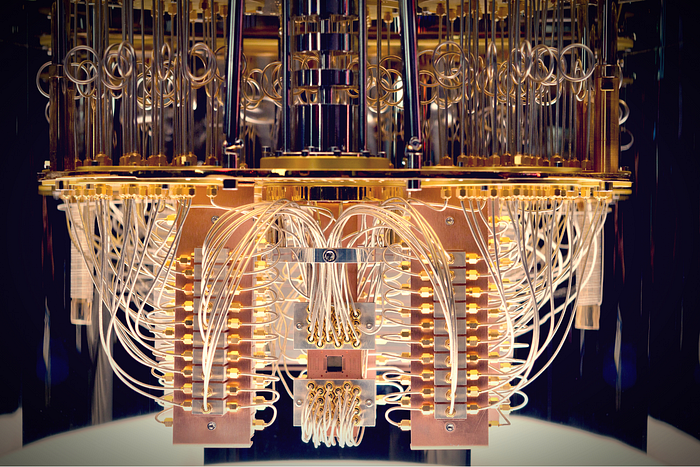Exploring Quantum Computing's Role in Advancing Deep Learning
Written on
Chapter 1: The Intersection of Quantum Computing and AI
The rapid evolution of advanced architectures has allowed deep learning (DL) to tackle increasingly intricate and diverse challenges. However, as these models grow, so does the computational cost associated with training them. With the limitations of Moore's law becoming apparent, the AI research community is actively searching for alternatives to address these challenges.
Fortunately, the advent of quantum computing devices presents promising opportunities to transcend the limitations of traditional computing, both technological and thermodynamic. Nonetheless, research into leveraging quantum computing for deep learning is still in its early stages, and the process of adapting neural networks for quantum systems remains uncertain.
In the research paper titled "The Hintons in your Neural Network: a Quantum Field Theory View of Deep Learning," a team from Qualcomm AI suggests a novel approach: directly mapping deep neural networks onto optical quantum computers using quantum field theory. This methodology could significantly influence the future design of quantum neural network architectures.
The term "Hintons" is a tribute to Geoffrey Hinton, as it refers to the fundamental excitations of the quantum field that form the basis of optical quantum neural networks.
The researchers initiate their study by examining the principles of probabilistic numeric neural networks, which utilize Gaussian processes (GP) to categorize input signals even when data is incomplete. They employ GP representations to define the neural architecture.
Next, they introduce a sequence of quantum operations that expand upon the classical layers found in probabilistic numeric neural networks. They demonstrate how Bayesian inference can be executed with Gaussian states, allowing quantum entanglement to reflect an agent's uncertainty regarding discretization errors. Subsequently, they illustrate how a quantum equivalent of a linear layer can be applied to quantum fields, mirroring the function of classical linear layers.
Lastly, the researchers detail how classical neural networks can be integrated into the quantum framework. They interpret this model as a semi-classical approximation of the quantum system, combining principles from quantum mechanics—particularly the uncertainty relation for covariance—with classical mechanics for non-linear behavior.

To assess the performance of the semi-classical neural network, the researchers implemented it on an optical quantum computer, where they found that it performed as anticipated.
High-level visualization of the model implementation in quantum optical hardware shows input signals at specified locations (y1, y3) with a missing intermediate value (x2). Laser beams are prepared for all locations, and quantum GP (QGP) inference is utilized to generate a posterior state. A series of linear and non-linear operations are then performed until a measurement is taken by a detector, leading to the classification of the input signal.
The researchers outline their key findings as follows:
- Utilizing Gaussian states for Bayesian inference.
- Developing unitary operators that apply standard non-linearities.
- Presenting manageable limits for the quantum network.
- Discussing implementation strategies for the proposed models on quantum hardware.
The team also identifies exciting future research avenues, including the exploration of approximate solutions that align with the complete quantum model, optimizing quantum GP inference on quantum devices, and advancing quantum non-linearities alongside a quantum framework for classical models.
The full paper, "The Hintons in your Neural Network: a Quantum Field Theory View of Deep Learning," is available on arXiv.
Author: Hecate He | Editor: Michael Sarazen
Stay updated with the latest advancements and research breakthroughs by subscribing to our popular newsletter, Synced Global AI Weekly.
Chapter 2: Video Insights on Quantum Learning
In the video titled "Dr. Petar Veličković (Deepmind) - Categories, Graphs, Reasoning [NEURIPS22 UNPLUGGED]," Dr. Veličković explores the intersection of categories, graphs, and reasoning within the realm of deep learning, providing valuable insights into ongoing research in this domain.